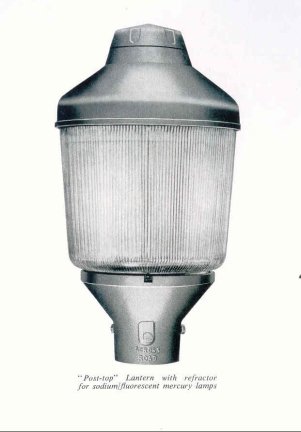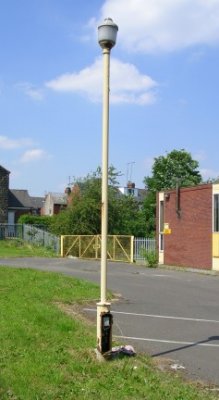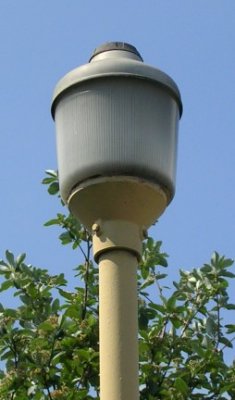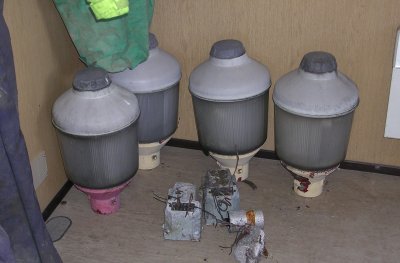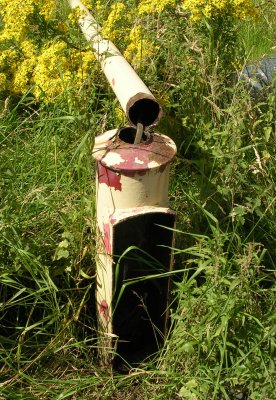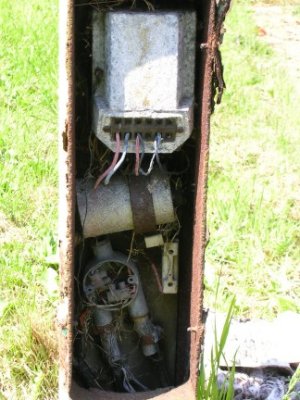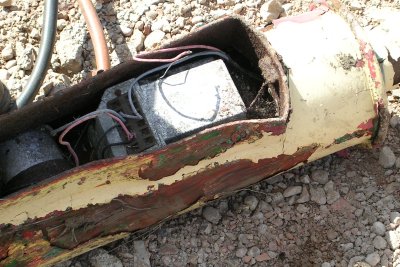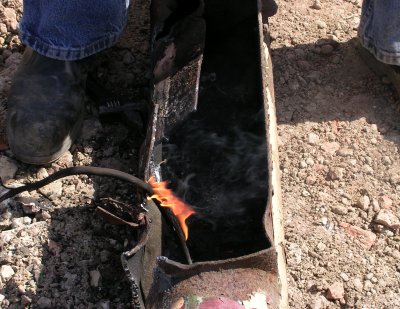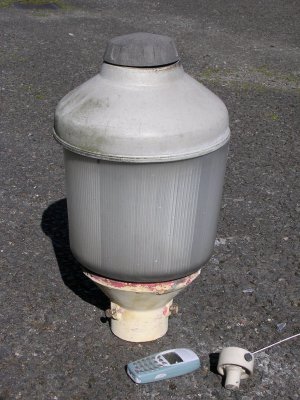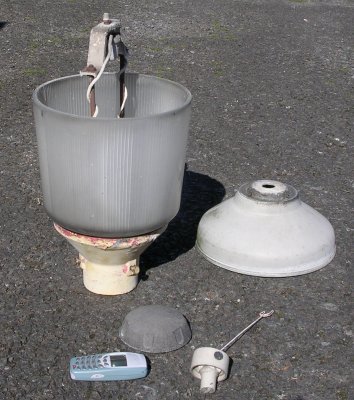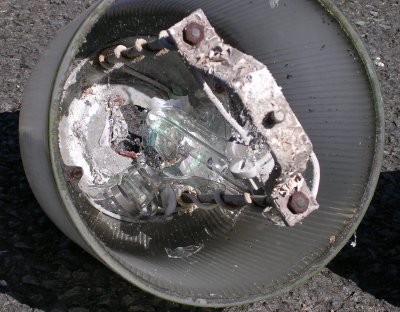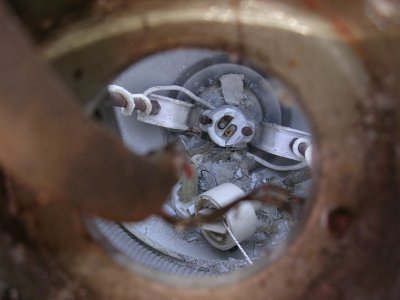Metropolitan-Vickers PR91 post-top lantern
for 45/60w SO lamps
|
Manufactured by Metropolitan Vickers in the early 1950's, these dimutive post top lanterns were designed for use with a variety of bulb types including tungsten, mercury and sodium lamps. Design and construction of the PR91 is typical of the period with a cast aluminium spigot cap base, supporting a prismatic glass bowl, with a spun aluminium canopy that's held into place with a large cast aluminium hand-tightened nut. The sodoium lamp burns cap up, and is supported from the lampholder-bridge by two internal metal rods, see last but one picture below.
An illustration of a PR model lantern from a 1950's Metropolitan Vickers street lighting catalogue. Never common in their heyday, these lanterns are almost impossible to find in this day and age.
In June 2006, I was driving through Ecclesfield in South Yorkshire and found myself driving past what was the former "Stanley Tools" factory site. The site looked to be derelict (and was), but the top of an old lamppost situated at thr front of the old factory caught my eye. I recognised it as a Metropolitan Vickers type lantern, having seen illustrations of them in an old 1950's Metropolitan Vickers catalogue. Amazed by what I'd I seen, I stopped and went back to the entrance. On entering the property, I found not one, but four of these lanterns and all appeared intact!
To cut a very long story short, the factory had been built in 1954 and these lanterns had been installed at that time. The site had stood disused for a couple of years, but was now in the throws of being sold on for redevlopment. As a result of this, it took many months of negoitation with various people at various companies to finally get agreement to save them. When the factory was finally demolished over 12-months later, I got the go ahead from the demolition contractors to fetch them, and collected them on 31st July 2007. I came away with all four of these lovely little lanterns, along with some of the original BTH control gear. My sincere thanks to the guys for saving them for me.
This was the sight that greeted me on 9th June 2006, when I drove into what had been former Stanley Tools factory in Ecclesfield, South Yorkshire! When I first came by these lanterns, I assumed (wrongly) that they were for MBF lamps, but it later transpired that they were actually low-pressure sodium lanterns.
Just over 12 months later, the four rescued PR16s stand huggled together in the corner of the contractors cabin ready for collection on 31st July 2007, along with a couple of the BTH transformers and capacitors from the bases of the columns.
As for the columns, they lay outside in a completely wreck state. The column on this example had corroded so badly around the top of the base unit that it had collapsed. Just image if a ladder had been placed against and someone had been climbing up it when it toppled. I think this picture serves as a warning to anyone contemplating rescues on their own on without proper risk assessment and professional help.
This picture was taken on 9th June 2006, and shows the control gear in one of the four columns, this was the only one that it was possible to see the gear in, as the others had still got their doors on. Because the decal on top of the transformer had been weather away, it was impossible for me to tell what type of lamp it was designed to power. At this point, I suspected that the lantern burned Mercury vapour lamps, but this wasn't to be.
On removal, the bases of two of the columns had been crushed by an earth mover. This had trapped the BTH leak-transformers inside; fracturing the aluminium case on this example. You can see the fracture line down the side of the terminal connector block.
The only way the transformers could be extracted form the crushed columns was by cutting them out using an Oxyacetylene cutting equipment. Gary, the site foreman stands over the burning column; not surprisingly, the transformers were badly scorched in the exercise and were probably rendered useless by the heat. Anyway, at least an attempt was made to save them and I do have the burnt remains.
Having finally got the lanterns home, I looked at them in a little more detail. Here my ' steam driven' mobile phone gives us a sense of scale, the PR91's are really are quite small. The prismatic bowl is made of glass and is held into place by the spun aluminium canopy, which is secured by the large hand-tightened knurled nut on top. To the right of the lantern is the sad remains of a 60w SO/H lamp. This must have been smashed during the removal of this lantern, what an unfortunate loss.
With
the spun knurled nut and canopy removed, we can see that they are a cap-up
burning Sodium lantern. It's quite apparent that there isn't too much too the
construction of these lanterns, but they are well made, and having survived
some 52 years, is testament to the build quality.
This is the inside of another lantern, showing the remains of a SOX lamp, I just hope that it wasn't a pre-re rated SOX lamp! Check out the asbestos sheathed wire, wound around the lampholder support rods.
This is looking inside the example that contained the broken SO/H lamp. Since acquiring the PR91s, two have since been passed onto other collectors, the other two remain in my custody. |
|
Copyright(c) 2005-2007 Claire Pendrous. All rights reserved. Please note that all pictures are by Claire Pendrous, or are part of the Claire Pendrous photographic collection unless otherwise stated; none of these images can be copied without obtaining prior permission. |











